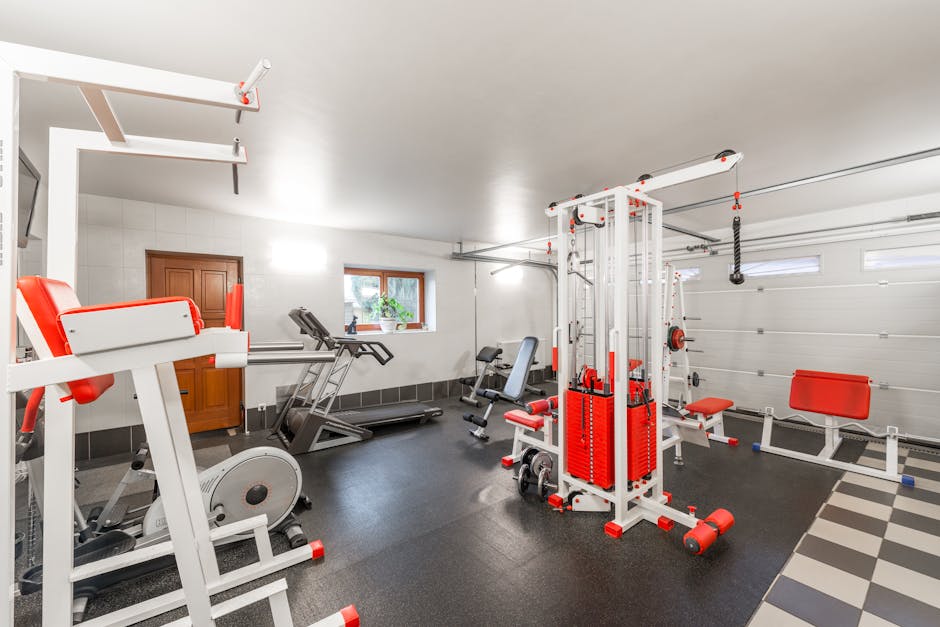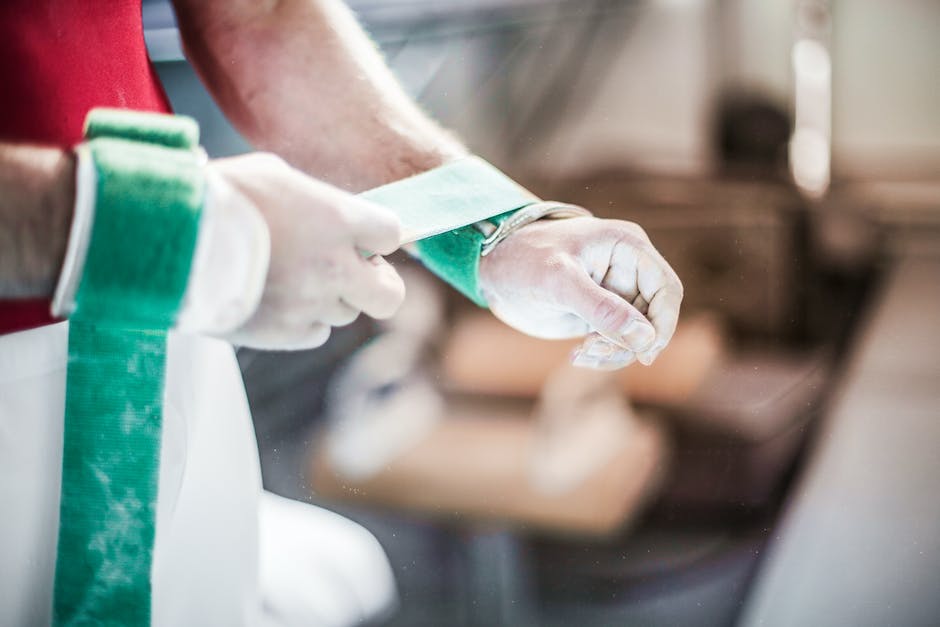Ah, heavy lifting. The satisfying grunt of exertion, the rush of adrenaline, and the sweet feeling of accomplishment. Whether it’s deadlifting, bench pressing or just lifting your boss’s spirits, heavy lifting is all about pushing your limits. But, what happens when those limits push back? What if the sweeter feeling of accomplishment is replaced by excruciating wrist pain? That’s where we come in. Brace yourself (and your wrist) for this article on the importance of wrist support when it comes to heavy lifting. It’s going to be a real scream (or, you know, grunt).
Contents
- 1 1. The Importance of Wrist Support in Heavy Lifting: A Comprehensive Guide
- 2 2. Understanding Wrist Injuries and How Wrist Support Can Prevent Them
- 3 3. Types of Wrist Support Gear: Which One Is Right for You?
- 4 Types of Wrist Support Gear: Which One Is Right for You?
- 5 4. How to Properly Use Wrist Support in Heavy Lifting: Tips and Techniques
- 6 5. Choosing the Best Wrist Support for Your Exercise Routine: Factors to Consider
1. The Importance of Wrist Support in Heavy Lifting: A Comprehensive Guide
Imagine you’re crushing your next personal best on the bench press or deadlift. Everything feels great up until the moment your wrist buckles and you’re left with a sprain that’s going to keep you out of the gym for weeks. Sound familiar? Well, that’s where wrist support comes in, my friends! No more weak wrists, no more fear of injury, and no more excuses.
So let’s talk about the types of wrist support available to you. First and foremost, there are wrist wraps. These bad boys provide compression and support to your delicate wrist joint. They’re particularly useful for compound lifts like bench press, squats, and overhead press where a lot of weight is put through the wrist. Obviously, they won’t make up for bad form or poor technique, so make sure you’ve got those hands placed correctly before wrapping it up!
Secondly, we’ve got lifting straps. These aren’t your average wrist support, but they can save you from a lot of wrist pain if you’re a deadlift fanatic. Deadlifts put a lot of stress on your grip and forearm muscles, which can lead to a big drop in weight if your grip just can’t keep up. That’s where straps come in – they secure the weight to your hands so you don’t have to rely on your grip strength alone.

2. Understanding Wrist Injuries and How Wrist Support Can Prevent Them
Let’s face it, we all take our wrists for granted until something goes wrong. Whether it’s playing an intense game of ping pong or typing up a storm on your computer, wrist injuries can happen in the blink of an eye. But fear not, wrist support is here to save the day (or at least your wrist).
But what kind of injuries are we talking about here? Well, there’s the dreaded carpal tunnel syndrome, which sounds like a fancy car wash, but is actually a painful nerve condition that can strike anyone who spends too much time typing or performing repetitive motions. Then there’s the classic tennis elbow, which is ironic since most of us can barely hit the ball over the net, let alone cause ourselves actual harm.
- Wrist support can help prevent these injuries by providing extra stability and cushioning for your precious wrists.
- It can also help with post-injury recovery, allowing you to get back to your favorite activities sooner rather than later.
- Plus, let’s not forget the fashion statement you’ll be making with your slick wrist brace. Who needs a Gucci purse when you’ve got a neon green wrist support?
So, don’t wait until you’re lying in bed with an ice pack on your wrist, wishing you had invested in some quality wrist support. Take care of your wrists now, and they’ll take care of you (or at least allow you to keep playing your favorite video games without fear of injury).
3. Types of Wrist Support Gear: Which One Is Right for You?
Types of Wrist Support Gear: Which One Is Right for You?
Are you constantly finding yourself with wrist pain? Do you wish you could carry your groceries without feeling like your wrist is about to explode? Well, have no fear, wrist support gear is here! Let’s take a peek at some of the most popular types of wrist support gear, and which ones might suit your needs.
1. Wrist Braces
- Great for those experiencing pain from carpal tunnel or sprains
- Provides extra support while still allowing for a range of motion
- Great for those who need support during physical activity
2. Compression Sleeves
- For the fashion-forward wrist pain sufferer
- Can be worn under any outfit without anyone knowing
- Provides compression for extra support and pain relief
3. Wrist Wraps
- Great for weightlifting or any activity requiring heavy use of the wrists
- Provides extra support and stability during lifting movements
- Also great for those with wrist sprains who still need to be active
4. How to Properly Use Wrist Support in Heavy Lifting: Tips and Techniques
When it comes to heavy lifting, having proper wrist support can mean the difference between a triumphant lift and a sad, injury-ridden lift. Here are some tips and techniques to properly use wrist support when engaging in heavy lifting.
First of all, make sure your wrist support fits you properly. If it’s too loose, it won’t provide the necessary support. If it’s too tight, it might cut off blood flow and cause your hand to turn blue. Nobody wants that, unless Smurfs are your thing.
Secondly, use the right kind of wrist support for your specific activity. There’s a difference between wrist wraps and wrist straps, and using the wrong type for your sport or activity can result in hilariously disastrous consequences. For example, using wrist straps for CrossFit might result in a failed attempt to lift a tire above your head, while using wrist wraps for powerlifting may make you look like a fancy gift-wrapped package, but won’t give you the support you need.
Lastly, make sure you’re properly using your wrist support. It’s not enough to just slap it on and hope for the best. Make sure it’s snug, but not too tight. Also, don’t wrap it around unevenly, or you’ll end up with a lopsided lift and everyone will think you’re a pirate with a hook for a hand. Nobody wants that kind of attention, unless it’s Halloween and you’re trying to win a costume contest.
In short, whether you’re a powerlifter, CrossFitter, or just a regular gym-goer, making use of proper wrist support can go a long way in protecting your wrists and helping you lift heavier weights. Use these tips and techniques to ensure that you’re using your wrist support properly, and may the gains be with you!
5. Choosing the Best Wrist Support for Your Exercise Routine: Factors to Consider
- Material: You wouldn’t want to wear potato sacks on your wrists and neither do I. That’s why it’s important to consider the material of the wrist support before buying it. Look for a durable material that can withstand the sweat that comes with your intense weightlifting.
- Size: Not all wrists are created equal. Make sure you know the measurement of your wrist before buying your wrist support. Otherwise, you might end up looking like a balloon tied at the end of a stick. Nobody wants that.
- Fashionable design: You might argue that it’s not important, but I beg to differ. If you’re going to be wearing wrist supports during your exercise routine, why not make them fashionable? Choose a design that speaks to you and makes you look like the cool kid at the gym. Just remember, functionality before fashion.
Now that we know what to look for when choosing our wrist support let’s talk about the benefits. Wrist supports can provide stability to the wrist joint preventing any unnecessary strain that could lead to an injury. It can also improve your grip on the weights, ensuring that you can lift heavier weights without your wrist giving out. And let’s face it, who doesn’t want to be the strongest person in the gym?
But here’s a pro tip, don’t rely on the wrist support alone. Make sure you’re doing exercises that strengthen your wrist and forearm muscles. If you only rely on the wrist support, your wrist muscles will become weak and prone to injury. So, choose a wrist support that complements your exercise routine, not replaces it.
Say goodbye to weak wrists, and hello to gains!
Now that you know the importance of wrist support when it comes to heavy lifting, don’t be caught without it. Your days of struggling with weak, wobbly wrists are over. Instead, you’ll be confidently lifting those weights like a champion.
So, go ahead and invest in the best wrist support you can find – your wrists (and gains) will thank you. And remember, always aim for progress, not perfection. Except with wrist support. Perfection is the only option.








Leave A Comment